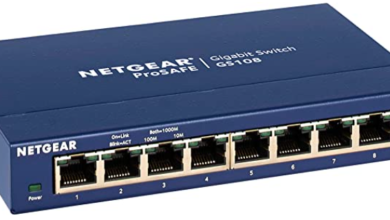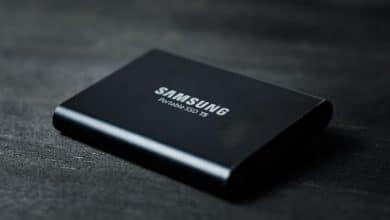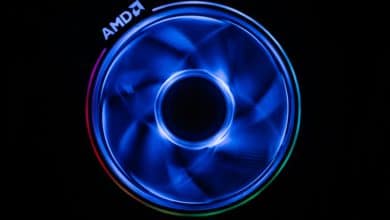75HZ vs 144HZ Complete Guide
Before we get into 75HZ and 144HZ, it’s important to understand what refresh rate and frame rate means.
Your display’s refresh rate shows how many times it can update the image on your screen per second. A monitor’s maximum supported resolution and framerate are occasionally specified, such as “75HZ at 144Hz.” The higher the recharge rate, the more often your Monitor can be updated per second, reducing flickering/juddering effects on fast-moving objects and creating a smoother picture.
The frame rate is the time of frames it can deliver in a second.
Rendering refers to how the GPU practises a frame and transform it into a format that a computer monitor can understand and display.
The video game system sends a picture to the GPU to render. The computer monitor receives the GPU’s frame and shows it on the screen.
75HZ Monitor:
A 75Hz monitor is a display type that updates the image on a screen 75 times per second. In comparison, displays with a greater refresh rate have a lesser refresh rate. Watching movies on these displays is a breeze. They also aid in the reduction of motion sickness in gamers, as the visuals move at a faster rate.
Most displays with refresh rates exceeding 60Hz are more costly than a 75Hz monitor.
These panels were popular approximately 15 years ago, but their popularity has waned as new displays with similar capabilities have become available.
144HZ Monitor:
A 144Hz monitor is a display device capable of displaying pictures at 144 frames per second (FPS), which is twice as fast as most displays’ typical refresh rate of 60 frames per second.
A 144Hz display is perfect for gaming since it allows for a more fluid and realistic experience. In certain users, it can also help with eye tiredness and migraines.
144hz is quickly becoming the industry standard for gaming because it creates a new image every 6.8 milliseconds, resulting in a far smoother gameplay experience.
Gaming:
75HZ Monitor:
If you’re a new player on a tight budget, you might want to save money on your display. If that’s the case, a 75Hz display is an option worth considering. A 75Hz display has a slower reaction time than a 60Hz panel, perfect for fast-paced gaming.
Because of the fast refresh rate, this sort of Monitor is ideal for playing sports, watching TV shows, and watching movies with battle scenes.
Furthermore, while playing graphically intensive games on a 75Hz display, dialling down your graphics settings might help you gain performance. In games that require rapid reactions, you will have an advantage over those who use a 60Hz display.
144HZ Monitor:
In contrast, a 144Hz display offers a faster response time, ideal for first-person shooters and strategic games. Because there is no visual blur or distortion, they are also ideal for watching high-resolution movies or gaming streams.
If you want to get the most out of your game, this is your display.
If you’re shopping for a gaming monitor, it’s worth considering a 144Hz model because some gamers prefer the 144Hz experience above resolution or colour quality.
Although not all games use a fast refresh rate, you may not see a significant boost in some circumstances.
Make sure your graphics card can support a 144Hz display before buying one. You’ll need a high frame rate to get the most out of this sort of Monitor. Therefore, your graphics card must be able to run applications at speeds beyond 60 frames per second.
However, the decision is not as simple as you may believe. Although most gamers prefer a 144Hz display, both 75Hz and 144Hz panels have gaming perks and downsides. 144hz displays refresh their screens 144 times per second, whereas 75hz monitors only refresh their screens 75 times per second.
This implies that on a 144hz display, there will be far less motion blur, and your games will run more smoothly. If you’re not a serious player who requires a competitive advantage in speed, a 75hz display will suffice.
Free Sync
75Hz Monitors:
The graphics card instructs the display to modify its refresh rate, which is how free sync works.
This happens when it can’t keep up with the frame rates of your game, but it may also happen if you’re playing a game that employs vsync (a forced 60fps cap, for example).
Tearing can be seen on 75Hz displays when this happens.
The Monitor is not synchronizing with your frame rate, which means it doesn’t have enough time to show an entire frame before sync or whatever limiting mechanism in that game tells it to go on to the next one.
144Hz monitors:
There are fewer rips and a much more uniform image on 144Hz panels at 75fps.
This is due to the Monitor’s ability to display every frame twice on the screen, once for each half of the screen.
It won’t completely prevent ripping, but it will greatly lessen it. Tearing is a visual artefact created by a monitor’s frame rate and refresh rate being out of sync.
This occurs when the image on the screen is updated quicker than the Monitor can display it, causing a portion of the previous image to be shown alongside the current one.
144HZ is better in terms of free sync.
Frame Rate
75Hz Monitors:
The recharge rate controls how many frames per second a display can handle.
This indicates that a display with a refresh rate of 75Hz can accommodate up to 75 frames per second.
144Hz Monitors:
A 144Hz screen can display up to 144 frames per second. Because of the greater refresh rate, more frames per second are possible.
This implies that if you’re playing a game with many frames per second, you’ll need a display with a 144Hz refresh rate to enjoy the seamless gameplay.
While some gamers believe that a display with a faster refresh rate is the way, this is not always the case.
Suppose you may not have an Nvidia graphics card capable of maintaining frame rates over 144fps on average. In that case, you won’t be able to profit from a 144Hz monitor since your computer won’t transmit enough frames for your Monitor to show.
If you have a strong graphics card, a 1080p 144Hz monitor will provide the finest gaming experience as it can deliver over 100 frames per second, which your display can handle at this high processing speed.
Overclocking
75Hz Monitors:
Getting a device speed up than the manufacturer’s specs is known as overclocking. Overclocking can raise the recharge rate above what is permitted by the panel.
Displays with a test used to check of 75Hz, or less can be overclocked to roughly 100Hz or higher.
Many users are unaware that their display is overclocked and believe that the claimed 75Hz implies they can only play games at that pace, which is not the case.
144Hz Monitors:
You might think you can increase your 144Hz display if you want to get the most out of it. The answer is yes; however, you can overclock not all monitors. Visit the manufacturer’s website or contact customer service to see whether you can overclock your display. If you can upgrade your display, you’ll need to get a type of technology called an overclocking application and install it.
Overclocking a 144Hz display, in my opinion, is not worth it, given its already high rate. On the other hand, a 75Hz display is completely another scenario. When you move from 60Hz to 75Hz, the difference in smoothness is enormous, even more so when you go from 100Hz to 144Hz.
Pricing
75Hz Monitor:
75Hz displays are inexpensive, ranging from $100 to $200.
This is an excellent choice for people seeking a low budget monitor with fast refresh rates.
Hardware for displays with this refresh rate is often less expensive since demand is lower. As a result, 75Hz monitors may be found at a reduced cost.
Because of the limited demand for 75Hz displays and how inexpensive they are to manufacture, the OEMs for these components don’t mind offering them at low costs.
144Hz Monitors:
On the other side, a 144Hz display is more expensive. The typical cost of these monitors is around $200, but they can cost as much as $600 or more. This is because the components required to accomplish 144Hz are more costly and necessitate a higher graphics card. A 75Hz display is less expensive, but if you have a strong graphics card and are willing to pay a bit more for better performance, a 144Hz panel is the way to go. However, if you’re on a budget or your desktop isn’t quite up to snuff, a 75Hz monitor should suffice. In conclusion, it all comes down to your preferences and financial constraints.
Best 75Hz Monitors:
With a 75Hz refresh rate, the ASUS VA24DQ is ideal for gameplay and watching films.
The ASUS VA24DQ is a wonderful option for an economical monitor with a high refresh rate. It features a DisplayPort input to connect to a wide range of devices.
The VA24DQ’s resolution is 1920 x 1080, making it Full HD and capable of displaying high-quality video without pixel damage or motion blur.
It also has ASUS’ Eye Care Technology, which reduces blue light emissions for less strain on the eyes during extended sessions. It has an ergonomically built stand adjusted for length, tilt, and rotation.
You can adjust the length and tilt of your display with the ASUS VA24DQ for ideal viewing.
For gamers searching for a 75Hz display, the LG 34UM69G-B monitor is an excellent option. The display boasts a reduced input latency and a rapid reaction time, making it excellent for gameplay.
The LG 34UM69G-B also has AMD FreeSync technology, which reduces screen tearing and stuttering for a more enjoyable gaming experience.
The display also has a broad viewing angle, so it’s great for multiplayer gaming.
It has a single four-way control stick button that enables navigating the on-screen menu simple.
The VESA mounting holes on the Monitor make it simple to install it on a side or arm, freeing up table space for additional items like speakers and paper trays.
This is an IPS panel with wide viewing angles to see everything well.
Best 144Hz Monitors:
The Sceptre E248B-FPN168 is a fantastic cheap monitor with 144hz. This Monitor has a 24-inch screen with a 1920×1080 resolution and a one-millisecond reaction time.
The main drawback to this display is that it lacks built-in speakers, but it has an outstanding display for the price.
For entry-level gamers wishing to improve their existing Monitor or construct a budget gaming system, the Sceptre E248B-FPN168 is the ideal option.
This Monitor can be bought on Amazon for a price that makes it one of the lowest displays available at this display size, with free delivery and Prime availability.
This is a wonderful alternative for gamers on a budget who want to get into 144Hz displays but don’t want to spend a lot of money.
The AOC G2790VX is a 27-inch monitor featuring a 144Hz refresh rate, Adaptive-Sync functionality, and 12-millisecond input latency.
If you want a 144Hz monitor with reduced input latency, the AOC G2790VX is a fantastic choice.
It has a TN panel with a 1ms response time and supports AMD FreeSync technology.
In addition, the display features a low input latency of 12 milliseconds, which is ideal for gaming.
The AOC G2790VX, on the other hand, lacks built-in functionality like an audio connection or a USB hub.
REFRESH RATE for 144HR
Every 6.94ms, a 144hz monitor revives the screen (i.e. shows a new picture every 7 ms).
It’s critical that the Monitor’s total reaction time is below or the same as 7ms, so that picture elements have altered colours by the minute the screen is reloaded. (The ASUS VG248QE offers the greatest overall reaction times in a modestly valued 144hz gaming screen, at seven milliseconds.)
The 1ms G-t-G value is deceptive because it ensures not to reflect the Monitor’s total reaction time, which is how long it takes for the picture element to shift from different hues.
REFRESH RATE VS FRAME RATE
FRAME RATE IS HIGHER THAN REFRESH RATE
VSync Off
This option is termed if you haven’t changed your computer’s frame rate settings, and the GPU is permitted to drive up as many frames in a second as possible.
When the GPU can produce more frames per minute than the laptop monitor can display, a phenomenon known as screen tearing occurs, as demonstrated below.
Because the image is done up of two separate frames, it looks ripped.
Although screen scratching is unpleasant, the VSync OFF situation has a benefit in that the inactivity/feedback lag is minimal. VSYNC OFF is the setting to use if you’re playing a high-fps match like CSGO that demands rapid reflexes.
What Does VSync Do?
Vertical Sync technology, often known as Vsync, synchronizes the pace at which the GPU renders frames to match up your display’s refresh rate.
Said, VSYNC limits the GPU frame rate to the equivalent of the screen’s refresh rate. As a result, the GPU does not send a new frame to the screen until the preceding frame has been entirely rendered. This completely prevents screen tearing.
VSync On Or Off?
So, what is your favourite setting? Is it better to keep Vsync on or off?
Both options have advantages and disadvantages. In the end, it comes down to the sense of balance you can achieve with either option.
When using VSYNC, keeping the frame rate sites as low as possible is advisable to match your display’s refresh rate. For example, if you have a 75Hz display, you should limit the structure rate to 75 frames per second. This will eliminate screen tearing as well as input latency.
Compared to VSYNC ON, Vsync Off will always give significantly lower input latency and more responsive gaming. It won’t, however, eliminate screen tearing.
FastSync:
Unlike VSYNC, Nvidia’s FastSync does not limit the GPU’s frame rate. Even if the screen has a reduced refresh rate, the GPU generates as many frames as possible. Buffers hold GPU-rendered frames (memory is a short-term storage area). After rendering a set-up on the screen, the Monitor searches the accessible buffers and selects the most recent frame generated employing GPU to show. The buffers’ remaining frames are discarded. As a result, the screen only shows the most recent produced frame.
FastSync reduces screen tearing and is extremely responsive, with little input latency. However, NVIDIA Graphic Cards are the only ones that enable FastSync, and not numerous displays do. FastSync displays are not cheap.
FRAME RATE IS LESS THAN REFRESH RATE
Computer Stuttering / Game Stuttering with VSYNC ON:
Make sure you ever noticed that the game you’re playing isn’t going as smoothly as it should be. Is it apparent that it stalls and then resumes its usual speed? When you’re performing a game, you can notice stuttering.
VSYNC ON backgrounds might cause game stuttering. Remember that VSYNC ON restricts the graphics card’s highest frame rate. This does not ensure that the GPU will execute frames at the pace set by VSYNC ON indefinitely. When a frame to be displayed needs much GPU work, the GPU frame rate might drop dramatically.
Half-refresh Rate
This display technology synchronizes the screen to part of the Monitor’s rejuvenate rate, offering your PC extra time to prepare for stuttering gaming situations. We all understand that there are portions of a game when the frame rate changes, and if the PC could not manage these demanding elements of the match, stuttering is to be expected. Using a half-refresh rate, your PC’s efficiency is reduced to 50% of your Monitor’s refresh rate, allowing it to have more power to make the game’s most demanding areas, perhaps reducing or eliminating stuttering.
Physically setting the review rate.
Manually adjusting the rejuvenate rate is an option, although it may only act out for certain games. It’s important to remember that lowering the rejuvenate amount too low might result in additional display difficulties. However, finding a nice equilibrium between the PC’s working and manually choosing your invigorate rate number might be useful, varying on how effectively you improve it.
GSYNC VS FREESYNC
Together GSync and FreeSync tools control the Monitor’s frame rate. If you get a 144Hz display and your video card generates 90 frames per second, GSYNC and FreeSync will alter the Monitor’s refresh rate to 90Hz. The display refresh rate is adjusted to 120Hz if the frame rate rises to 120fps later. Whether you’re utilizing Gsync or FreeSync, the Monitor’s refresh rate is dynamically regulated. It’s worth noting that Gsync and FreeSync are only useful if the graphics card’s frame rate is smaller than the Monitor’s refresh rate.
Nvidia’s proprietary hardware component is included in all Gsync displays at a charge to the display makers. That explains why Gsync displays are more expensive than AMD’s FreeSync panels.
GSync technology, in my personal opinion, gives a smoother and more responsive gaming experience than FreeSync technology. Gsync displays also function equally well across all monitor manufacturers.
FreeSync, however, does not operate consistently across different monitor brands. This implies that one FreeSync Monitor may deliver an easier gaming experience than another FreeSync Monitor of a distinct system or brand.
Gsync or FreeSync, which should you buy?
There is no one answer to this question. It would help if you examined the benefits and drawbacks of each technology before deciding on GSync or FreeSync.
Gsync is the most reliable and reliable expertise across all monitor brands. It has a lower input latency and more fluid gameplay. Gsync monitors, on the other hand, are more costly than FreeSync displays.
FreeSync significantly enhances gaming by eliminating stuttering and ripping. However, FreeSync’s results vary from display to monitor, with some monitors performing better than others. FreeSync displays, on the other hand, are significantly less expensive than Gsync monitors.
Once you’ve used a Gsync or FreeSync screen, you may not ever need to move back to your older one.
Pros and Cons
You’ll need to consider various parameters, and each sport will require its configuration. If your 75Hz display has a 1ms reaction time and your 144Hz display is much slower, you might choose to play some games just on a 75Hz display. Furthermore, 75Hz displays tend to be less expensive since the technology is less expensive, allowing companies to carry those benefits on to customers.
As a result, 75Hz displays are often more affordable, and you’ll be able to achieve very good performance on a 75Hz screen even if video games are tuned for 144Hz displays. The dynamic range on 75Hz displays is frequently the greatest. It’s not that 144Hz displays can’t compete, but if you want both vivid colour and a fast frame rate, you’ll have to pay a premium. If you really can obtain one, that’s fantastic, but for the most part, you’ll have to settle with a lesser model, especially when you’re first beginning out.
Screens with a 144Hz frame rate are primarily intended for fast-paced games. It’s critical to think about the titles you enjoy first, instead of purchasing a new display without first assessing what you play.
One disadvantage of going to 144Hz is that you may need to refresh your video card. It is dependent on the specifications of your system; nonetheless, it is a simple sense that if you get an elevated monitor, your desktop must be able to sustain it.
FAQs
75Hz vs 144Hz – Which screen has less discrepancy?
A 144Hz display takes around 7ms to generate and show a frame, whereas a 75Hz screen takes 13ms. A 144Hz display draws in a substantially shorter time for each frame displayed. As a result, the latency caused by a 144Hz monitor is far smaller than that caused by a 75Hz panel.
Simply said, a 144Hz display is more reactive than a 75Hz panel. When contrasted to a 75Hz screen, any game activity on the keys, such as a button pushed for a shot, looks significantly faster.
75Hz vs 144Hz – Which screen is nicer to operate on?
A 144hz sensor’s screen updates 144 times per second, while a 75hz watch’s screen updates 75 times per second. A 144hz screen can display 144 frames a second, but a 75hz monitor can only display 75 fps. Compared to a 75hz screen, a 144hz watch allows you to observe 70 more frames a second. Consequently, on a 144hz screen, the gameplay appears significantly faster.
Is 75Hz a suitable frequency for virtual time trials?
75Hz is plenty for sim racing — it does the job well, but if you’re upgrading from 60Hz, a 75Hz display will ease your process easier in every aspect! While a 144Hz display gives a faster and more appealing picture than a 75Hz display, it will not assist you if your GPU doesn’t support more than 75fps.
What Is the Price of a 75Hz Monitor?
A 75Hz display is significantly less expensive than a 144Hz screen. You could get your paws on a 75Hz screen for as little as $80. The cheap cost is that the frame rate is less demanding, allowing companies to make 75Hz screens at a lesser cost.
How many frames per second will you obtain from the game you plan to perform?
You can discover this by viewing benchmarking films for your intended build on YouTube, or if they now have a PC, google for comparison films based on
- the specifications of your PC
- the games you want to play
- as well as your desired size.
Because now you know how many frames per second your game system produces, you can select a display with a matching framerate.
75Hz versus 144Hz – 75hz 1ms versus 144hz 2ms – Which of these has a lesser motion artefact?
Assuming that neither Monitor employs methods such as backlight flashing strobe, a 144hz 2ms monitor is unquestionably superior since it has a smaller MPRT (Moving Picture Response Time Value) benefit and hence less Motion Blur. Allow us to explain.
There are 2 types of pixel reaction times that you must consider.
- GtG (Gray to Gray) Response Time – is how long it takes for a pixel to transition through one shade of grey to another
- MPRT (Moving Picture Response Time) — the time it takes for pixels to pop up.
There isn’t anything to complain about when it comes to GtG reaction times. GtG figures have steadily improved throughout the decades. Several monitors on the marketplace have incredibly fast GtG reaction times (1ms / 2ms). As a result, GtG isn’t the major cause of motion artefacts.
Shutter speed, on either hand, is largely the responsibility of MPRT. MPRT has not experienced the same major improvements as GtG reaction times.
MPRT is the time it takes for a picture to remain on a display before the screen restores and a new picture is produced. A lower MPRT number is preferable.
A 5ms MPRT screen is superior to a 10ms MPRT screen because it creates fewer motion artefacts.
Why Do You Choose a 144Hz Screen Over a 75Hz Screen?
- Do you would like to be prepared for the future? Especially if you have a reduced video card, opt for a 144Hz display. You may always update your video card later if necessary.
- The game is far more fluid than on a 75Hz panel, and the lag is minimal on a 144Hz screen.
- If you play competitive matches where response time is critical, 144Hz is the method. Low latency combined with more frames surely offers you an advantage over your competitors in titles like CSGO.
Final Words:
Several criteria should be considered when selecting the best gaming monitor, including screen size, resolution, and refresh rate.
Based on the preceding, a 144Hz is the superior alternative. Your gaming experience will be smoother, but it will also help you be more productive if you deal with graphics or videos.




